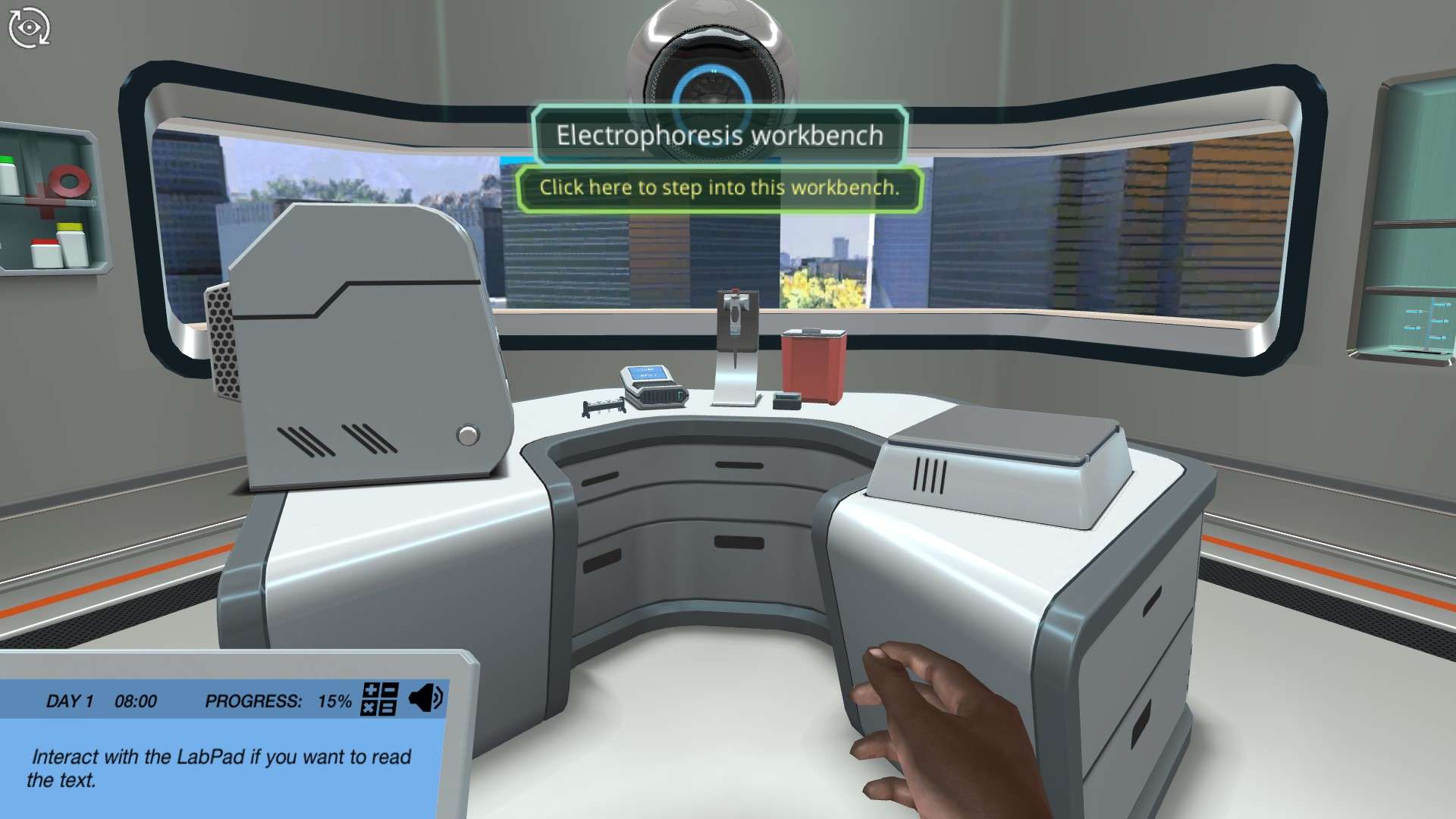Heading 1
Heading 2
Heading 3
Heading 4
Heading 5
Heading 6
Lorem ipsum dolor sit amet, consectetur adipiscing elit, sed do eiusmod tempor incididunt ut labore et dolore magna aliqua. Ut enim ad minim veniam, quis nostrud exercitation ullamco laboris nisi ut aliquip ex ea commodo consequat. Duis aute irure dolor in reprehenderit in voluptate velit esse cillum dolore eu fugiat nulla pariatur.
Block quote
Ordered list
- Item 1
- Item 2
- Item 3
Unordered list
- Item A
- Item B
- Item C
Bold text
Emphasis
Superscript
Subscript
About This Simulation
Solve a crime by using DNA fingerprinting to identify a thief. Use nucleic acid gel electrophoresis to separate and visualize DNA molecules and watch an animation to understand what happens inside the gel tank.
Learning Objectives
- Explain the visualization and separation of nucleic acid molecules through gel electrophoresis
- Summarize how nucleic acid molecules migrate through an agarose gel
- Explain the principles behind size separation and direction of migration
- Analyze and interpret a nucleic acid gel by using a DNA ladder and controls
About This Simulation
Lab Techniques
- Agarose gel electrophoresis
Related Standards
Learn More About This Simulation
Your peanut butter keeps getting stolen and it is time to catch the thief. In this simulation, you will learn how you can use DNA fingerprinting to identify individuals. You will use gel electrophoresis to separate and visualize DNA fragments.
Loading the gel
Join Dr. One in the molecular biology lab. The DNA samples from the crime scene and two suspects have already been collected, extracted, and amplified for you. You will start by learning about sample preparation and loading the samples into an agarose gel with a pipette.
Look inside the gel
Once you have loaded all the samples into the gel, you can start the gel electrophoresis process. While this runs, you will dive into the gel tank and discover how DNA fragments are separated by size with this technique through an immersive animation.
Analyzing the gel
Now that you understand how gel electrophoresis works, you will return to the molecular biology lab. The DNA fragments have now been separated and visualized so you can compare the band patterns of the two suspect samples with that of the crime scene sample. Will you be able to catch the thief?
Experience Labster for Yourself
Boost Learning with Fun
75% of students show high engagement and improved grades with Labster
Discover Simulations That Match Your Syllabus
Easily bolster your learning objectives with relevant, interactive content
Place Students in the Shoes of Real Scientists
Practice a lab procedure or visualize theory through narrative-driven scenarios


For Science Programs Providing a Learning Advantage
FAQs
Find answers to frequently asked questions.
Heading 1
Heading 2
Heading 3
Heading 4
Heading 5
Heading 6
Lorem ipsum dolor sit amet, consectetur adipiscing elit, sed do eiusmod tempor incididunt ut labore et dolore magna aliqua. Ut enim ad minim veniam, quis nostrud exercitation ullamco laboris nisi ut aliquip ex ea commodo consequat. Duis aute irure dolor in reprehenderit in voluptate velit esse cillum dolore eu fugiat nulla pariatur.
Block quote
Ordered list
- Item 1
- Item 2
- Item 3
Unordered list
- Item A
- Item B
- Item C
Bold text
Emphasis
Superscript
Subscript
Labster can be integrated within a school's LMS (Learning Management System), and students can access it like any other assignment in their LMS. If your Institution does not choose an LMS integration, students will log in to Labster's Course Manager once they have an account created. Your institution will decide the access method during the sales process.
Labster is only available for purchase by faculty and administration at academic institutions. To procure Labster, simply reach out to us on our website. Schedule a demo, book a meeting to discuss pricing, start a free trial, or simply fill out our contact form.
Labster simulations are created by real scientists and designed with unparalleled interactivity. Unlike point and click competitors, Labster simulations immerse students and encourage mastery through active learning.
Labster supports a wide range of courses at the high school and university level across fields in biology, chemistry and physics. Some simulations mimic lab procedures with high fidelity to train foundational skills, while others are meant to bring theory to life through interactive scenarios.










.png?fm=jpg&w=450&h=400)







